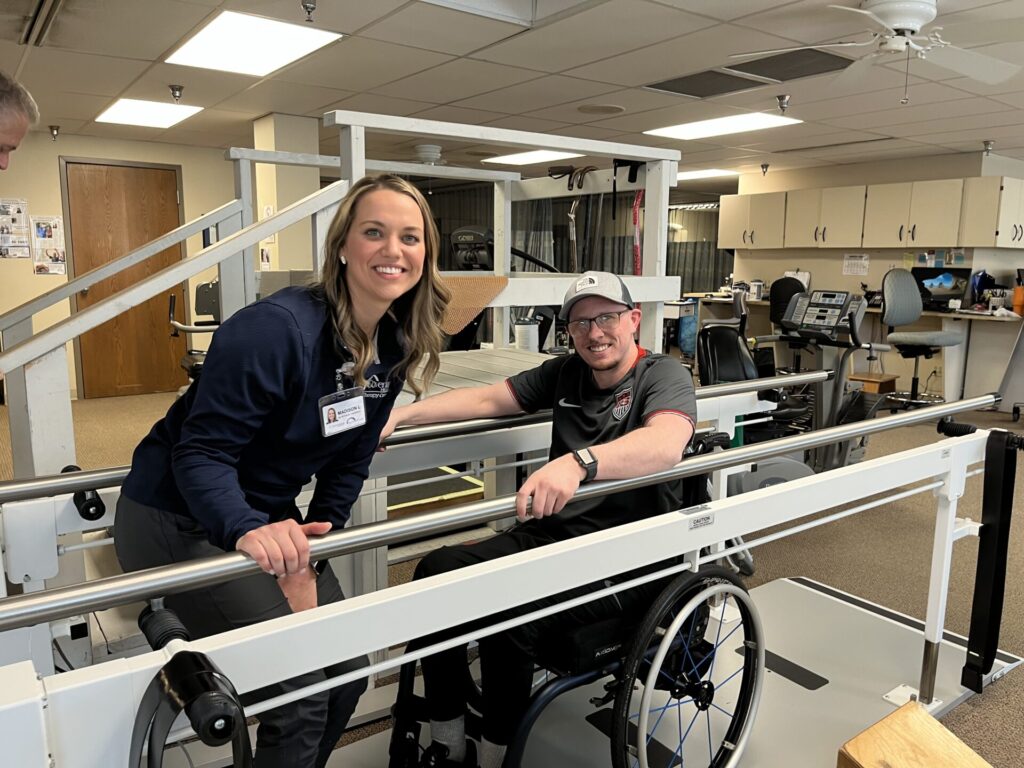- Find a DoctorDoctors by Specialty
- Cardiac Electrophysiology
- Cardiology
- Colon & Rectal Surgery
- Family Medicine
- Gastroenterology
- General & Vascular Surgery
- Gynecological Oncology
- Gynecology
- Infectious Disease
- Internal Medicine
- Interventional Cardiology
- Interventional Radiology
- Nephrology
- Neurology
- Neurosurgery
- Obstetrics & Gynecology
- Oncology
- Oncology & Hematology
- Orthopedic Surgery
- Otolaryngology
- Perinatology
- Psychiatry
- Pulmonary Medicine
- Radiation Oncology
- Rheumatology
- Sleep Medicine
- Thoracic Surgery
- Urology
- View All Doctors
- Our ServicesMedical Services
- Bariatric Services
- Behavioral & Mental Health
- Breast Care
- Cancer Care
- Critical Care
- Ear, Nose, & Throat
- Emergency Services
- Gastroenterology
- Glossary
- Heart Care
- Home Care
- Hospice & Palliative Care
- Imaging & Diagnostics
- Long-Term Care
- Nephrology
- Orthopedics
- Primary Care
- Rehabilitation Therapies
- Robotic-Assisted Surgery
- Sleep Services
- Spine Care
- Stroke Care
- Surgery Services
- Telehealth Services
- Urology
- Urgent Care
- Virtual Urgent Care
- Women’s Services
- Wound Care
- Our Locations
- Patients & Visitors
- About Us
As the weather warms and the fields are prepared, another season of baseball is upon us. Shoulder and elbow related pitching injuries are increasing in frequency at an alarming rate. Many factors are to blame.
There is no longer one season. Many children are playing the same sport, year round. End of the season showcases can be particularly stressful on a tired arm. Our children are not only pitching for their little league teams. They now have throwing coaches, pitching clinics, etc. Pitch counts and rest rules are being ignored. Youngsters are throwing curve balls, and sliders far too often. Coaches — want to win. So did mine…but it was a short season and then I moved on to another sport.
Many children (and parents) actually think that surgery can “fix” whatever injury might occur. Pitching more than 100 innings a season increases risk of injury threefold. 75 pitches or more/game doubles risk of injury. If a pitcher was “tired”, their risk of injury is 4-6x greater.
You as the parent must play a very active role in making sure that your child does not suffer what could be a very debilitating injury with potential lifelong implications. Coaches, little league officials, and trainers have a very important role as well.
Suggestions to Minimize Risk of Developing a Pitching or Throwing Injury:
- All pitchers and active throwers should participate in a solid conditioning and strengthening program. This should not neglect the trunk and legs since most of your power and torque comes from below the belly button.
-
Dynamic and static stretching should be performed before eat game.
-
Do NOT allow your child to play if they are in pain.
-
Obey the mandatory pitch count. A pitch is a pitch… whether it’s with their coach, in a game or in the backyard.
-
Rest means rest… I’ll cite the suggested Rest Rules soon.
-
Don’t let your little pitcher play catcher on off days. Science shows this can increase risk of injury.
-
Don’t let your child’s seasons overlap… and if they do, they should not pitch for both teams.
Recommended Pitch Counts:
Age: Max # of Pitches/day
- 7-8: 50
- 9-10: 75
- 11-12: 85
- 13-16: 95
- 17-18: 105
Rest Days: Based on number of pitches thrown
# of Pitches Thrown: # of Days of Rest
1-30: 0
31-45: 1
46-60: 2
61-75: 3
76+: 4
Pitch Count Summary:
Baseball is a fantastic sport and there’s no reason why your child can’t enjoy themselves and remain injury free. There is no getting around the facts borne out by a multitude of studies which demonstrate the risk factors associated with pitching injuries. Your child’s health is of paramount importance. With a little effort and “playing by the rules”, hopefully you can provide them with a memorable, pain free experience on the diamond.
Dr. Hoover has more than 20 years experience in diagnosing and treating diseases and injuries of the musculoskeletal system – bones, joints, ligaments, tendons, muscles and nerves, and brings advanced technologies and the latest treatments to East Tennessee.
Call us at (865) 316-3650 for more information.























